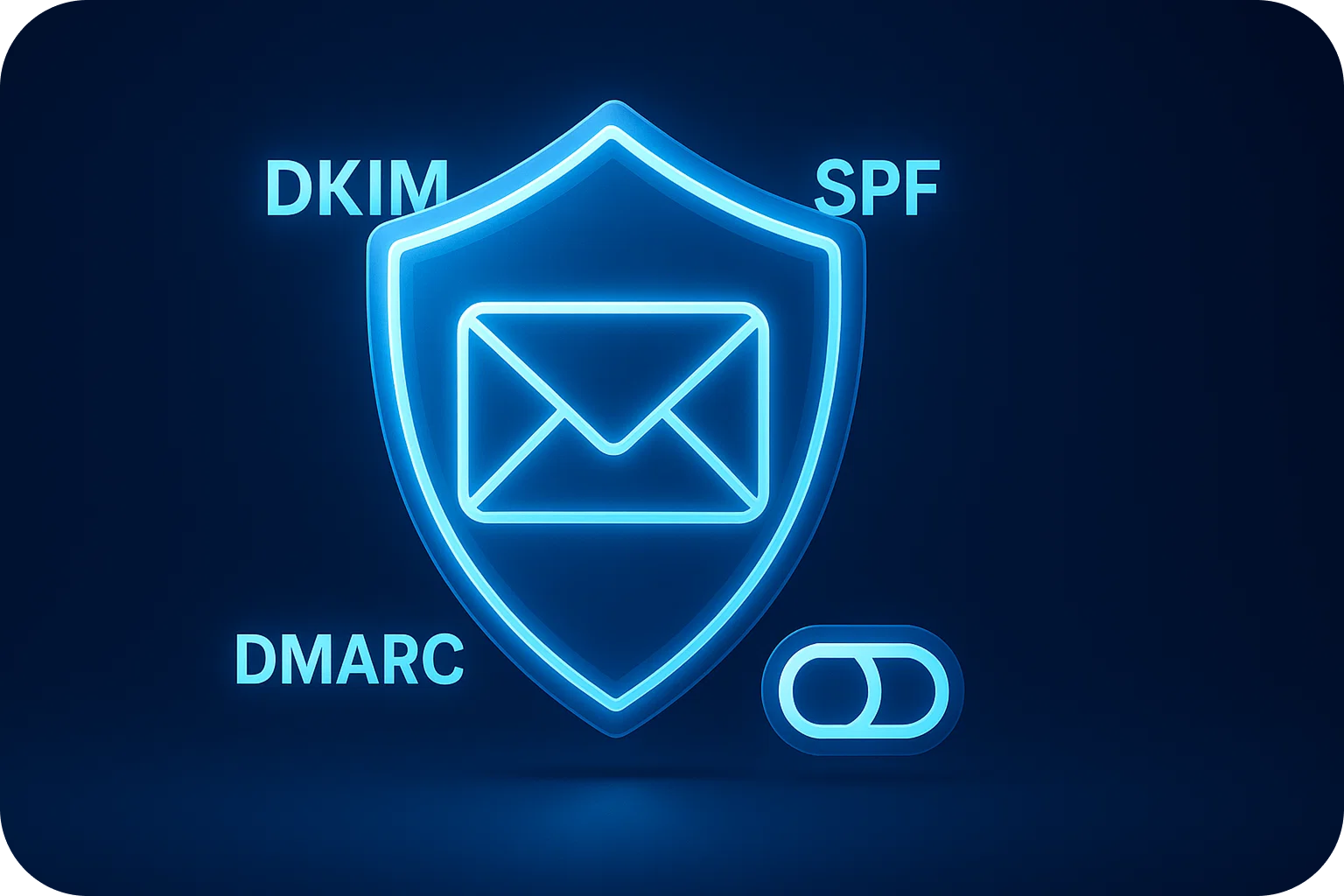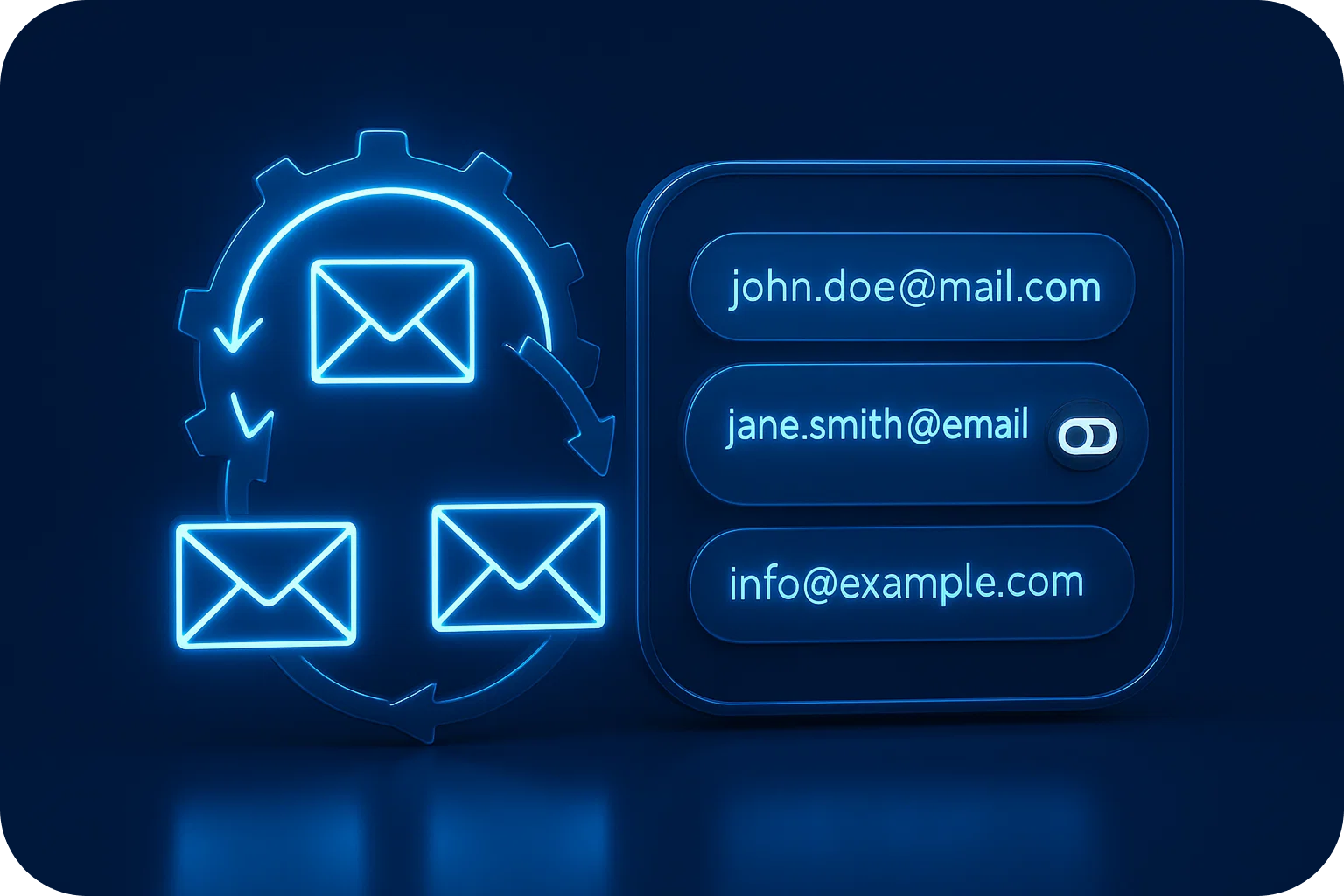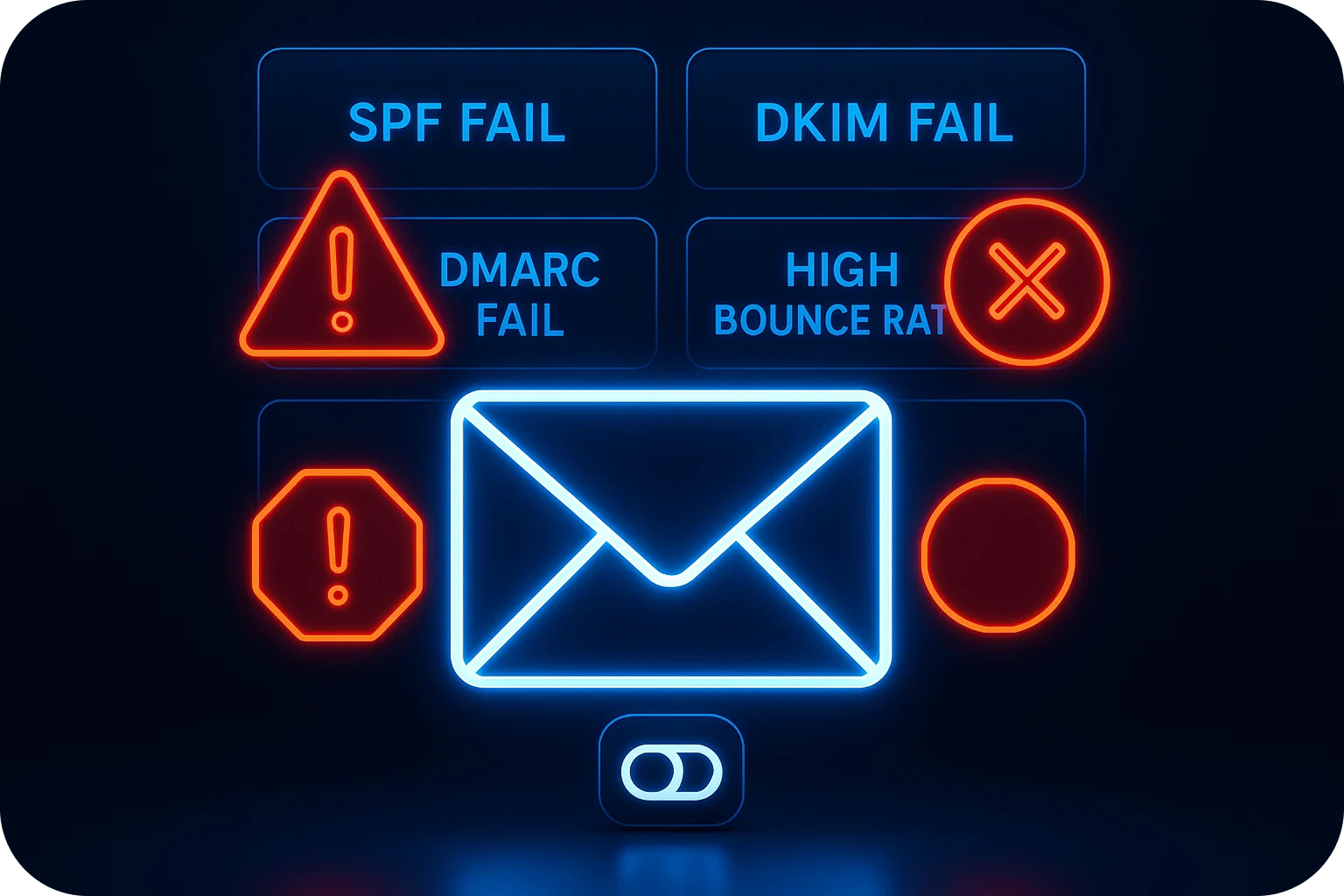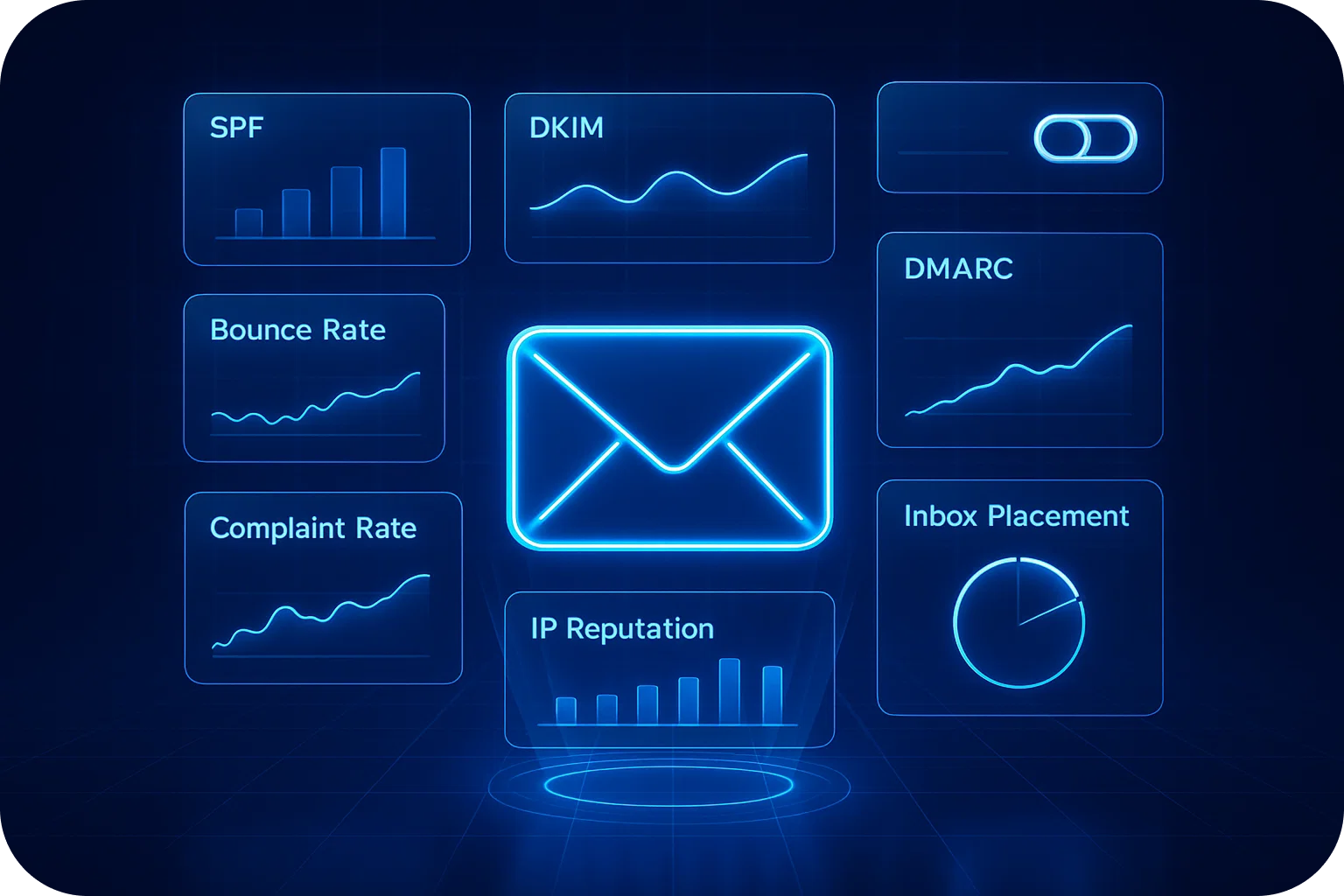Why Your Email Warm-Up Service Might Be Hurting You (And What to Do Instead)
.png)
You've done everything right. You purchased new domains, set up fresh email accounts, and enrolled them in a reputable email warm-up service. You waited patiently for weeks, watching those warm-up metrics climb. Your dashboard shows green checkmarks everywhere.
So why are your cold emails still landing in spam?
If this sounds familiar, you're not alone. Thousands of sales teams and startups invest in email warm-up tools expecting to build sender reputation, only to discover their deliverability hasn't improved or worse, has actually declined. The uncomfortable truth is that many email warm-up services, despite their promises, may be undermining the very thing they claim to protect: your sender reputation.
The Email Warm-Up Promise vs. Reality
Email warm-up tools promise a simple solution: gradually increase your sending volume through automated exchanges with other users in the network, building engagement signals that tell inbox providers you're a legitimate sender. In theory, this should train Gmail, Outlook, and other providers to trust your domain.
But here's what most warm-up services don't tell you: inbox providers like Google and Microsoft have become exceptionally sophisticated at identifying artificial engagement patterns. Their algorithms can detect when emails are being sent between warm-up network participants rather than real prospects. And when they do, the consequences can be severe.
The Hidden Risks of Traditional Warm-Up Tools
1. Artificial Engagement Patterns Are Easily Detected
Modern spam filters use machine learning to analyze hundreds of signals beyond simple open and click rates. They examine:
- The relationship between sender and recipient
- Whether recipients have previously initiated contact
- How quickly emails are opened after delivery
- Whether engagement patterns match human behavior
- The quality and relevance of email content
When your inbox exclusively exchanges emails with other accounts in a warm-up network, these patterns become glaringly obvious. You're essentially telling Gmail, "I only email other people who are also warming up their inboxes," a clear red flag that you're not a genuine sender.
2. Shared Network Contamination
Most email warm-up services operate on shared networks where your inbox interacts with thousands of other users' inboxes. If even a small percentage of those accounts engage in spam behavior or get flagged, the entire network's reputation can suffer.
You might be following best practices perfectly, but if your warm-up partner accounts are compromised, your sender reputation takes collateral damage. It's guilt by association at a massive scale.
3. Content Irrelevance Signals
Warm-up services typically send generic, template-based emails back and forth. These messages bear no resemblance to your actual cold outreach campaigns. When you switch from warm-up content to real sales emails, inbox providers notice the sudden shift in messaging patterns, content quality, and engagement rates.
This inconsistency can trigger spam filters more aggressively than if you had gradually ramped up with your actual outreach content from the beginning.
4. False Confidence from Misleading Metrics
Warm-up dashboards show impressive statistics: 98% inbox placement, hundreds of positive interactions, and strong sender scores. But these metrics only reflect performance within the warm-up network, not how real inbox providers will treat your emails when you start sending to actual prospects.
This creates a dangerous false sense of security. Teams launch full-scale campaigns based on warm-up metrics, only to discover their actual deliverability is far lower than expected.
What Inbox Providers Actually Want to See
To understand why warm-up tools fall short, you need to understand what Gmail, Outlook, and other providers actually evaluate when determining sender reputation:
Authentic Engagement: Real recipients who voluntarily interact with your emails because they find value in your content.
Consistent Sending Patterns: Gradual, predictable increases in volume that match legitimate business growth, not artificial ramp-ups.
Low Complaint Rates: Very few recipients mark your emails as spam or unsubscribe immediately.
Proper Technical Configuration: Correctly implemented SPF, DKIM, and DMARC records that prove you own your domain and authorize your sending infrastructure.
Domain and IP Reputation History: A clean track record over time, with no sudden spikes in negative signals.
Content Quality and Relevance: Well-written emails that recipients actually read and respond to, not generic templates.
Notice what's missing from this list? Artificial engagement from warm-up networks. Inbox providers don't reward you for gaming the system, they reward genuine sender behavior.
The Safer Alternative: Infrastructure-First Deliverability
Instead of relying on warm-up tools to artificially inflate your sender reputation, focus on building a solid foundation that naturally earns inbox trust:
Start with Proper Technical Setup
Before sending a single email, ensure your infrastructure is configured correctly:
- Implement SPF, DKIM, and DMARC authentication on all sending domains
- Use dedicated domains for cold outreach (never your primary business domain)
- Configure reverse DNS and ensure IP reputation is clean
- Set up proper MX records and ensure email routing works correctly
This technical foundation does more for deliverability than any warm-up tool because it proves to inbox providers that you're a legitimate, professional sender who takes email seriously.
Scale Gradually with Real Outreach
Rather than warming up with artificial emails, start your actual cold outreach campaigns at low volume and gradually increase:
- Week 1-2: Send 5-10 emails per inbox per day
- Week 3-4: Increase to 15-20 emails per inbox per day
- Week 5-6: Scale to 30-40 emails per inbox per day
- Week 7+: Reach your target volume of up to 50-100 emails per inbox per day
This approach builds genuine engagement signals with real prospects who might actually be interested in your offering. Even if response rates are low initially, the engagement you do receive is authentic and valuable to inbox providers.
Prioritize List Quality Over Quantity
The fastest way to damage sender reputation isn't skipping warm-up, it's sending to low-quality lists. Invest in:
- Verified, up-to-date email addresses
- Highly targeted prospect lists that match your ideal customer profile
- Regular list cleaning to remove bounces and unengaged contacts
- Segmentation that allows for personalized, relevant messaging
When you email people who are genuinely likely to be interested in your solution, engagement rates naturally improve, building a positive sender reputation organically.
Monitor Real Deliverability Metrics
Don't rely on warm-up tool dashboards. Track actual deliverability metrics from your real campaigns:
- Inbox placement rates across different providers (Gmail, Outlook, Yahoo)
- Bounce rates (should stay below 2%)
- Spam complaint rates (should stay below 0.1%)
- Engagement rates from real prospects
- Domain and IP reputation scores from independent monitoring services
These metrics tell you what's actually happening with your emails, not what's happening in an artificial warm-up environment.
Distribute Volume Across Multiple Inboxes and Domains
Instead of pushing high volume through a single inbox (which triggers spam filters), distribute your sending across multiple email accounts and domains:
- Use 3-5 email accounts per domain
- Keep the daily sending volume per inbox under 50 emails
- Rotate domains to spread reputation risk
- Maintain a separate infrastructure for different campaign types
This approach mimics how legitimate businesses naturally scale their outreach, making your sending patterns appear more authentic to inbox providers.
When Warm-Up Tools Might Still Make Sense
To be fair, email warm-up services aren't universally harmful. They can provide value in specific scenarios:
Brand new domains with zero sending history: A brief warm-up period (1-2 weeks) can help establish initial sending patterns before launching real campaigns.
Recovering from deliverability issues: If your domain has been flagged, a carefully managed warm-up alongside infrastructure fixes can help rebuild reputation.
Supplementing low-volume campaigns: If you're only sending 10-20 emails per day, warm-up tools can add supplementary engagement signals without dominating your sending profile.
However, even in these cases, warm-up should be a short-term supplement to proper infrastructure and real engagement, never a long-term substitute.
The Bottom Line: Build Real Reputation, Not Artificial Signals
Email deliverability isn't a hack you can game with warm-up tools. It's the result of consistently demonstrating to inbox providers that you're a legitimate sender who respects recipients and provides value.
The most successful cold email programs share common characteristics:
- Rock-solid technical infrastructure configured correctly from day one
- Gradual, sustainable scaling that matches business growth
- High-quality prospect lists with verified, relevant contacts
- Personalized, valuable content that generates authentic engagement
- Continuous monitoring and optimization based on real deliverability data
If you're currently using an email warm-up service, don't panic and immediately shut it down. But do take time to evaluate whether it's actually helping your deliverability or just providing false confidence. Look at your real campaign metrics with actual prospects; those numbers tell the true story.
And if you're just getting started with cold email, resist the temptation to rely heavily on warm-up tools. Instead, invest that time and budget into building proper infrastructure, sourcing quality lists, and crafting compelling outreach that real prospects want to engage with.
Your sender reputation is too valuable to risk on artificial engagement. Build it the right way, and you'll achieve not just better deliverability, but sustainable, long-term success with cold email outreach.
Ready to Build Deliverability the Right Way?
At Mailpool, we help startups and sales teams build cold email infrastructure designed for 98% deliverability from day one. Our platform handles the technical complexity, DNS configuration, domain setup, inbox management, and deliverability monitoring so you can focus on crafting outreach that actually converts.
With 10-minute implementation, enterprise-grade security, and support for unlimited domains and inboxes, Mailpool.ai gives you the foundation to scale cold outreach 100x without sacrificing deliverability.
More articles
Get started now




%201.png)





